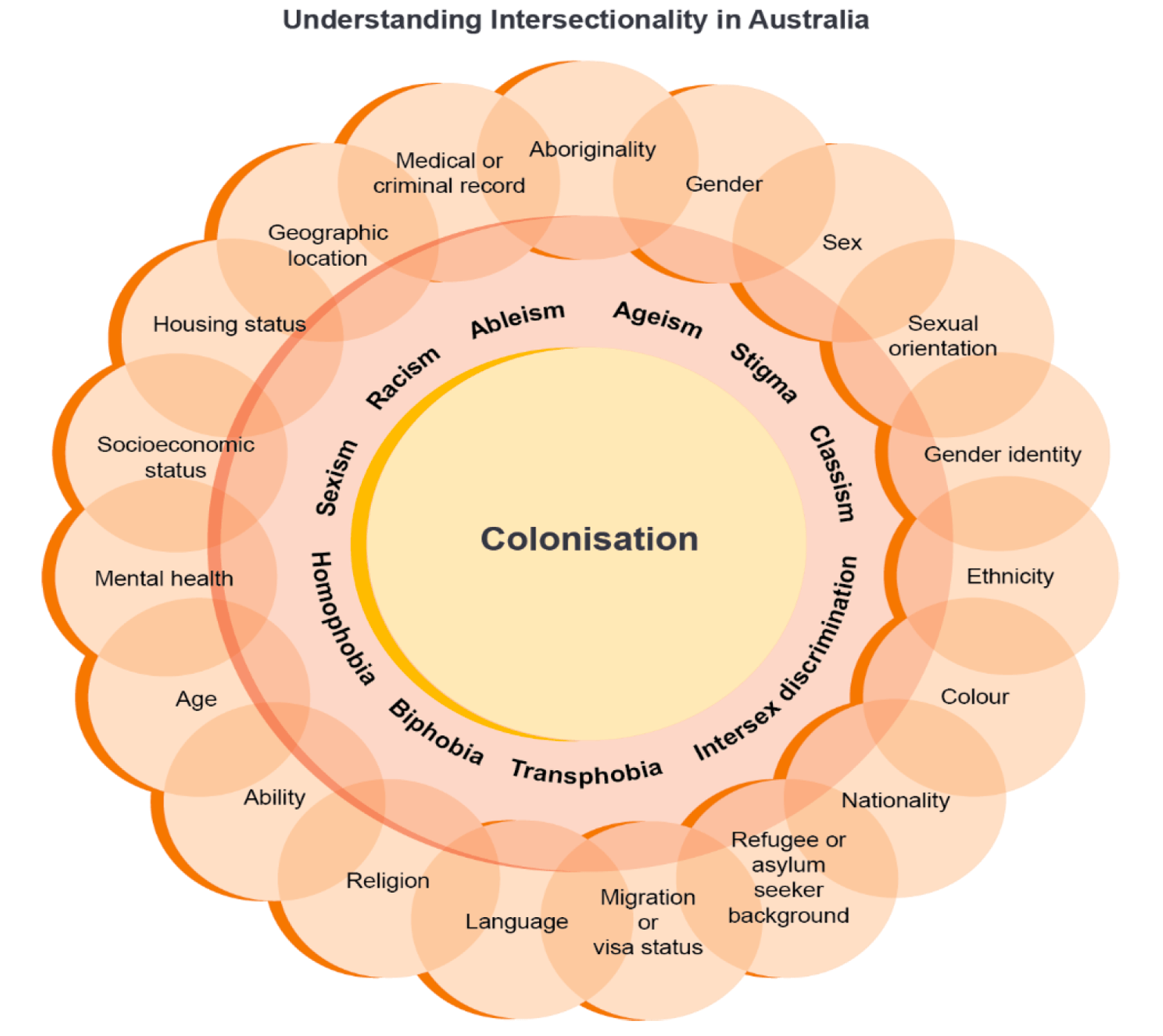Women are disproportionately affected by gender-based violence, including family violence. The perpetrators of this violence are overwhelmingly men. While gender inequality is the root cause of the violence against women, family violence can, and does, occur within a range of relationships. It is characterised by a pattern of abusive behaviour involving a perpetrator’s exercise of control and power over the victim.
Family violence can take many forms. It can occur within extended families, kinship networks, intergenerational relationships and through family-like or carer relationships. Intimate partners, family members and non-family carers can perpetrate violence against people they are caring for. Young people can use violence or be victims of violence within their family.
At the centre of all instances of family violence are individual and structural power imbalances. To address this, we need to create a society based on inclusion and equity.
Access is about ensuring that information, spaces, services and programs are available to everyone and are responsive to their needs.
Diversity and diverse communities: Throughout this document the term ‘diverse communities’ has been used. This term draws from the terminology used in the Royal Commission into Family Violence (RCFV) Report3 and recommendations. By diverse communities we mean:
- Aboriginal communities
- people in the sex industry
- people with disabilities
- faith communities
- people living in rural and regional communities
- older people
- young people
- women in or exiting prison or forensic institutions such as specialist mental health hospitals and services
- male victims
- LGBTIQ communities
- people experiencing mental health issues
- people from culturally and linguistically diverse communities.
The RCFV found people from diverse communities can experience family violence differently and can face multiple and intersecting systemic barriers and to accessing services. For some people in these groups, “family violence is less visible and less well understood than family violence in other parts of the Australian community”4. However, the term ‘diversity’ is not intended to be an othering term. Everyone has multiple layers to their identities. In recognising these multiple layers, we hope to ensure people from all communities across Victoria have equitable access to the services they need when they need them.
Equity means that available information, spaces, services and programs should deliver outcomes that people need and want. This requires services to be able to consider and respond to the intersecting forms of disadvantage and discrimination to truly cater to all diverse needs.
Intersectionality describes how systems and structures interact on multiple levels to oppress, create barriers and overlapping forms of discrimination, stigma and power imbalances based on characteristics such as Aboriginality, gender, sex, sexual orientation, gender identity, ethnicity, colour, nationality, refugee or asylum seeker background, migration or visa status, language, religion, ability, age, mental health, socioeconomic status, housing status, geographic location, medical record or criminal record. These compound experiences of family violence and create additional barriers for a person to access the help they need.
In late 2018 to early 2020, FSV led the Intersectionality Capacity Building Project to develop resources to increase the capacity and capability of family violence and universal service workforces to adopt and embed an intersectionality framework across family violence, sexual assault, and child and family wellbeing in order to foster inclusion and equity. The intersectionality framework and resources developed through the project was undertaken in collaboration with over 30 sector stakeholders and key Victorian Government departments and agencies over a five-phase targeted consultation process.
Intersectionality is a framework that seeks to understand how power intersects and conspires within systems and structures. This power creating overlapping forms of discrimination or disadvantage for either an individual or group based on social characteristics such as, but not limited to gender, sex, sexual orientation, ethnicity, language, religion, class, socioeconomic status, gender identity, ability or age.
Intersectionality also helps us understand our own individual circumstances, our position of power and our experiences within those systems, structures and institutions that organise our society. By truly understanding our own position of power, we will be able to critically reflect and work towards removing the systemic barriers faced by people who have been marginalised.
Experiences of inequality, particularly where it intersects, compounds the risk of experiencing family violence and creates additional barriers for a person to access the help they need. Intersectionality recognises that all people are complex and no one person has the same lived experience as another person. Intersectionality seeks to identify how we can challenge and/or advocate to change systemic discrimination and inequality to ensure all individuals can fully participate in society.
An intersectionality framework builds upon the foundations of our understanding of the gendered nature of family violence and sexual assault. It is a lens through which we can view how different forms of inequality and discrimination intersect and collide to influence experiences of family violence, sexual assault and child and family wellbeing issues, and impact on seeking help and access to services.
A system that adopts inclusion as an active process recognises the impact of marginalisation, values diversity and works to eliminate barriers. Adopting an active process of inclusion creates welcoming environments in which everyone can access services and the services available are responsive to diverse needs. Adopting an active process of inclusion means ensuring diversity of thinking, experiences, and skills are valued and utilised. An inclusive system is demonstrated by attitudes, behaviours, policies and practices that enable full and equal participation for everyone. It is achieved where programs, services and funding are flexible and responsive to diversity and where diverse communities are empowered as active participants at all levels of planning, decision-making and delivery.
3. Royal Commission into Family Violence Summary Recommendations 2016, p.32 https://www.parliament.vic.gov.au/file_uploads/1a_RFV_112ppA4_SummaryRe…
4. Royal Commission into Family Violence Report and Recommendations 2016, volume V, 9.1 http://files.rcfv.com.au/Reports/Final/RCFV-All-Volumes.pdf
Updated
